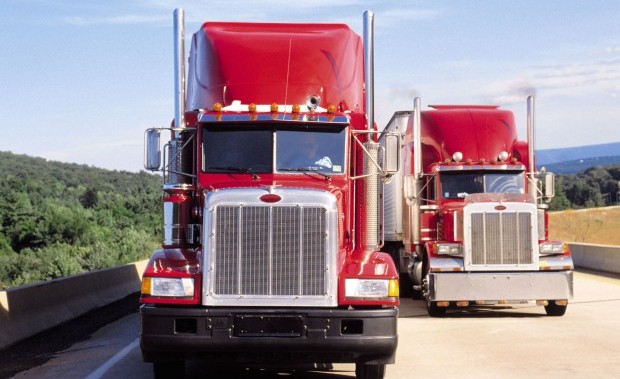Dear EarthTalk: Freight companies like FedEx, UPS and all those 18 wheelers on the highways probably generate a lot of pollution and global warming. Is anything being done to address this? – Michael Brown, Washington, DC
Freight companies operating in the U.S. and beyond do generate significant amounts of pollution. While transportation technologies and fuels have gotten more efficient in recent years, freight demands have grown considerably over the past two decades. Today, in the U.S. alone, for example, freight is responsible for about a quarter of all transportation-related greenhouse gas emissions.
Most freight trucks, locomotives and ships run on diesel engines, which are major sources of emissions of nitrogen oxides, particulate matter and carbon dioxide (CO2). Repeated exposure to nitrogen oxide-based smog and particulate matter has been linked to a wide range of human health problems, and we all know what CO2 emissions are doing to the planet’s atmosphere and ecosystems in terms of global warming.
According to a 2005 analysis by the U.S. Department of Transportation’s Federal Highway Administration (FHA), heavy duty trucks are the biggest villains, accounting for 77.8 percent of total U.S. freight greenhouse gas emissions. Boat, train and airplane freight contribute 10.8, 8.7 and 2.8 percent respectively.
Besides filling up loads completely and keeping equipment well tuned, shippers can reduce emissions via smarter operations and procedures. Software developed by UPS’s Roadnet helps logistics managers re-engineer their fleet routing, preventing tons of emissions and saving millions of dollars and in the process.
Newer Environmental Protection Agency (EPA) emissions standards aim to reduce nitrogen oxide and particulate matter pollution from freight operators upwards of 60 percent by 2020. They are a step in the right direction, but the failure of Congress to pass substantive federal legislation limiting CO2 emissions means that a growing freight sector will continue to pump out more and more greenhouse gases.
A recently released report by the tri-lateral North American Free Trade Agreement’s (NAFTA’s) Commission for Environmental Cooperation (CEC) lays out a vision for how to make freight—the second largest source of greenhouse gas emissions in North America after electricity generation—more efficient and less polluting across Mexico, the U.S. and Canada.
The report identifies some scary trends. For example, emissions from freight-related vehicles grew 74 percent between 1990 and 2008—some 40 percent more than emissions growth from passenger vehicles over the same time span. Also, while emissions by light duty vehicles are expected to drop 12 percent by 2030, freight truck emissions are expected to grow by 20 percent. To start turning the freight sector around, CEC recommends that the three countries party to NAFTA start shifting to lower carbon fuels, putting a price on carbon emissions and replacing crumbling infrastructure. These fixes won’t be cheap, but CEC claims they will save money in the long run and clean up of North American freight altogether.








